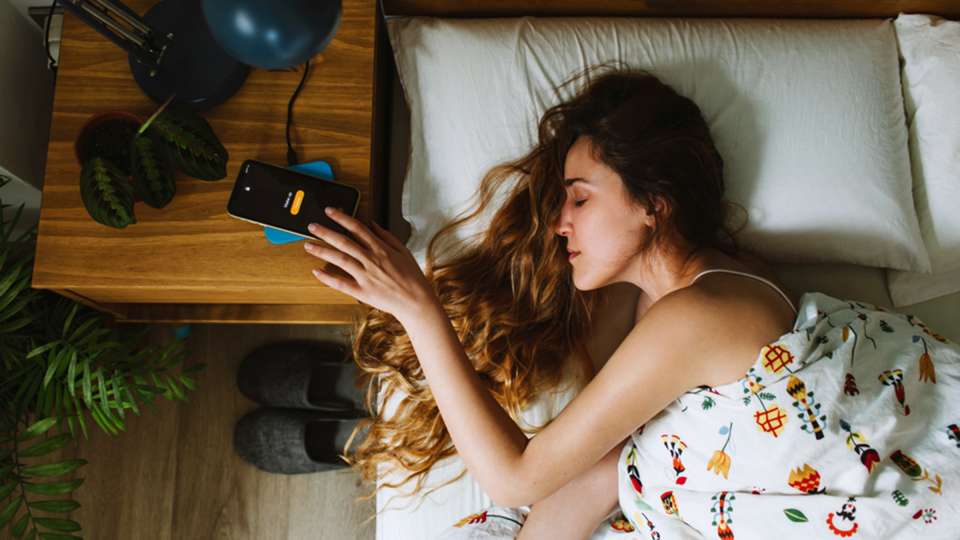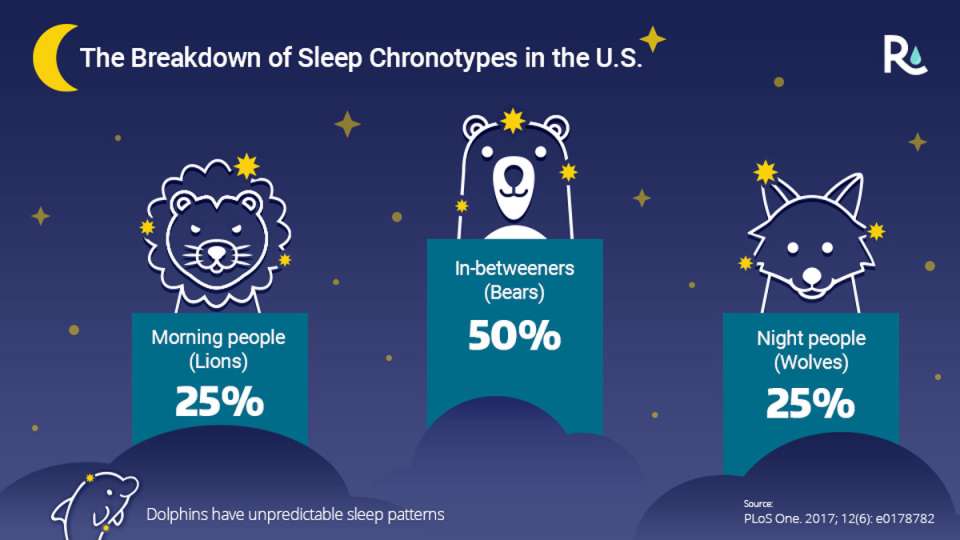
You’ve heard of night owls or morning larks, but have you heard of lions, bears, wolves or dolphins? These are the nicknames for the four sleep chronotypes that explain when someone is naturally inclined to wake up and fall asleep and when they feel most awake and tired during the day.
But are sleep chronotypes real? And is it possible to change your chronotype if you really want to, say, become a morning person?
Larks, owls and all birds in-between
Sleep chronotypes are, in fact, very real, though not necessarily in the way pop culture portrays them. Let’s do a deep dive.
First, the most important biological process that determines your sleep-wake cycle is your brain’s circadian rhythm, a roughly 24-hour cycle that controls important bodily processes. It is controlled by a “master clock” composed of a group of nerve cells that form a structure in the brain called the suprachiasmatic nucleus (SCN).
Your circadian rhythm is responsible for your afternoon slump, your strong desire to nap after that caffeine wears off, the jet lag you experience after traveling to a different time zone, and everything else sleep-related in between.
Your circadian rhythm is synched with the day-night cycle. Exposure to light in the morning and dark in the evening makes it more likely that your circadian rhythm — and your sleep-wake cycle — will be normal. (That’s why lots of screentime at night can throw off your circadian rhythm and make it harder for you to sleep.)
Your sleep chronotype, on the other hand, refers to the subjective way you experience your circadian rhythm, says Dr. Nathaniel Watson, a neurologist and sleep medicine specialist who is co-director for the UW Medicine Sleep Center.
“It’s based on a person’s experience of when they think they’re most awake, feeling their best, and are most effective at accomplishing daily tasks,” he explains.
Some people might feel awake as soon as they get up in the morning, but tired and ready for bed in the early evening. Other people might need several hours after getting out of bed to truly feel awake and will also feel awake later in the night. And those are just two possibilities.
Research has shown that there are some genetic components that help determine someone’s chronotype. Studies in twins suggest that while some twins live very different lives, they may have similar sleep preferences.
Connecting with your inner (sleep) animal
So, what about chronotype animals? They’re more of a fun (and less-than-scientific) way to describe sleep chronotypes.
The idea of morning, night and in-between people has existed for a long time and is backed by research. But more recently, a clinical psychologist named Michael Breus, who specializes in sleep medicine, created animal-themed names for different sleep chronotypes. Lions are more alert in the morning, wolves are more alert late at night, bears are aligned with the rising and setting of the sun, and dolphins have unpredictable sleep/wake cycles and are prone to insomnia.
It is estimated that more than half of the population is an in-betweener, says Watson, meaning they don’t feel significantly more awake in the morning or evening but rather in the middle of the day (aka a bear).
Even though the animal system isn’t a precise way to describe sleep chronotypes, it’s OK to use it as long as you recognize what really matters for your health is whether you’re a morning, night or in-the-middle person.
You probably already have an idea of your sleep chronotype, depending on if you’re that person who starts dozing off when your partner wants to watch a movie at 9 p.m. or you’re the person who stays up until 1 a.m. playing video games.
But to know for sure, pay extra attention to your sleep and waking habits. When do you naturally wake up, no alarm needed? When do you feel most awake? When do you start feeling tired, like you’re ready to go to bed? Once you’re in bed, how easy is it for you to fall asleep?
Knowing your chronotype can help you adjust your sleep habits in helpful ways, like maximizing your awake time and building a sleep routine that helps you feel more rested. Getting enough sleep is crucial to your overall health, helping you ward off infections, prevent injuries, reduce stress, lower your risk for chronic health conditions, and even protect your brain as you age.
It’s also important to note that no chronotype is bad, though let’s address the elephant (er, owl) in the room. Night owls get a bad rap because some research suggests people who regularly stay up late experience more health risks for things like diabetes or mental health issues. However, a new study found that night owls might also have more mental sharpness and better cognition.
It’s a zoo in the bedroom
Maybe you’d like to struggle less to wake up early so you aren’t rushed getting ready for work. Or maybe you’re starting a new shift job and trying to adjust to daytime sleeping. Is it possible to change your chronotype?
“It’s hard to change a chronotype,” Watson says. “There’s no simple solution to change an intricate bodily process, and you can’t force your body to do things it doesn’t want to do.”
And even if you can, it takes time to build new habits — weeks, at least. So if you’re trying to change your sleep habits, do so patiently and gently. Here’s how.
Optimize your light exposure
Being in bright light can help trick your brain into feeling more awake. If you’re groggy in the morning, try opening your windows right when you get up or going outside for a few minutes. If you’re trying to stay awake later in the day, get some afternoon or evening light or use bright indoor lighting.
Don’t push past tiredness
This is especially important if you’re a night owl who wants to feel more awake in the morning: Go to bed when you’re actually tired. Even if you normally go to bed at 1 a.m., if you feel tired at 11 p.m., that’s a sign that your body wants to sleep.
“There is a circadian alert signal that keeps us awake in the evening, so if you feel more awake after feeling sleepy, it’s that alerting signal,” Watson says. What he means is that if you feel tired but suddenly get a second wind, that doesn’t mean you should stay up even later; rather, it means that your body is already exhausted but trying to push past it since you ignored its earlier signals. So do it a favor and let it get some rest.
Keep things consistent
You might have heard it before, but we’ll remind you: Try to stick to a consistent sleep schedule. That means going to bed and getting up at relatively the same time each day (yes, even on weekends). Think of this as a way to help calibrate your circadian biological clock.
Know and love the beast within
Instead of trying to change your sleep chronotype, if you can instead embrace it and shift some tasks and responsibilities around to accommodate it, that’s even better for you and your health.
For example: If you’re a night person who works from home, can you ask to shift your work schedule a bit so you’re starting later in the morning? Or, if you’re more awake in the morning or afternoon, can you try to fit a workout in before you go to your job or after your lunch break, rather than waiting until later in the day when you have less energy? Not everyone will be able to make adjustments like this, but it’s worth it to try.
At the end of the day, whether you’re embracing your sleep chronotype animal or not, getting consistent, quality sleep is key. Try to get at least seven hours each night, avoid looking at your phone or watching TV an hour before bed, and establish a bedtime routine that helps you feel relaxed and ready to sleep.
“There's no magic fix, and there’s no substitute for sleep,” Watson says.

 Healthy ideas for your inbox
Healthy ideas for your inbox






